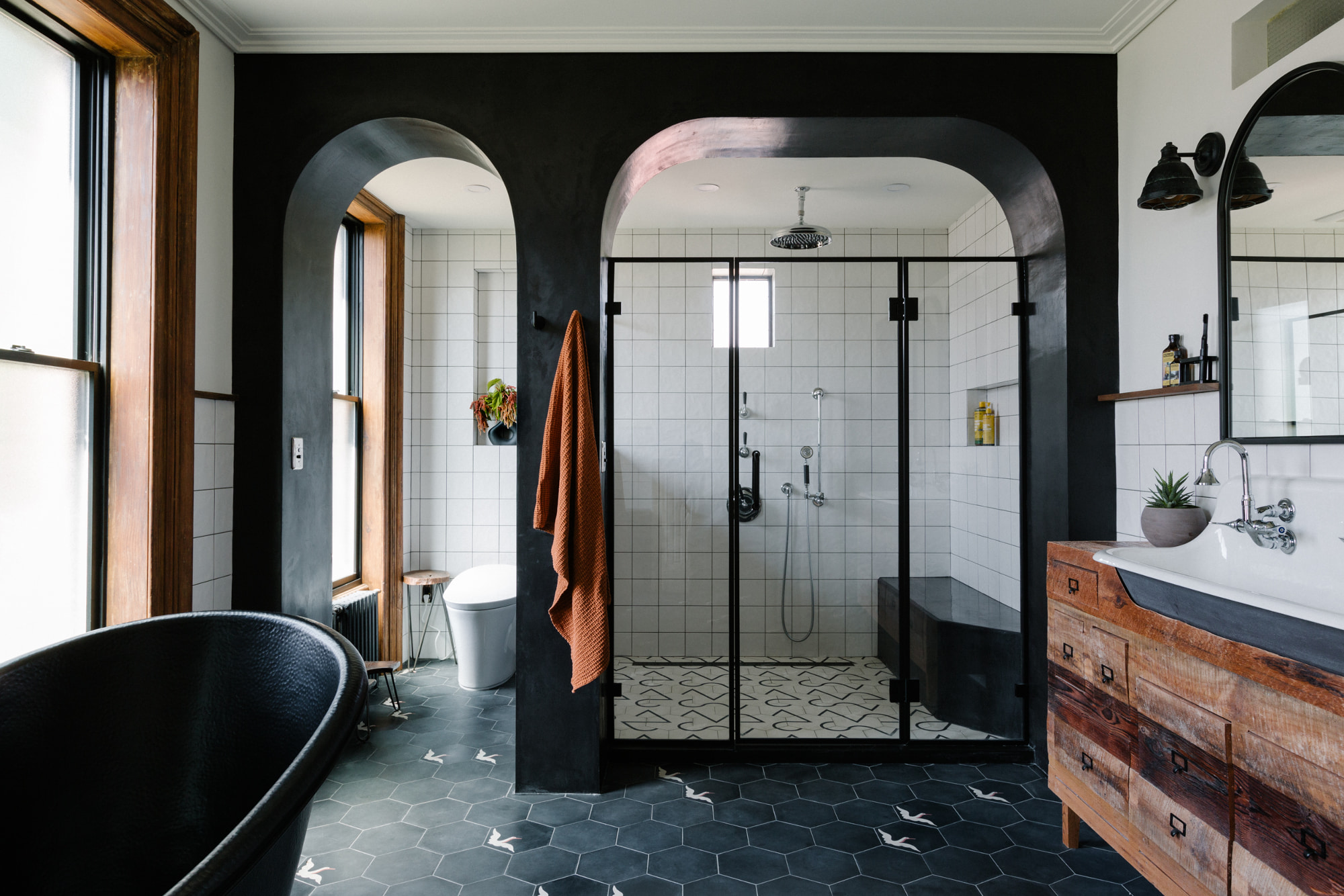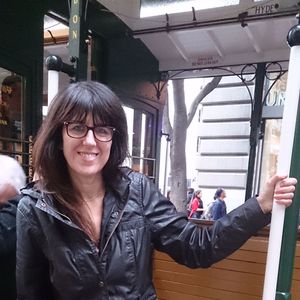Experts share their secrets for restoring historic homes to their former glory
We asked The Brownstone Boys to share their tips for rescuing older homes and reinstating their gorgeous original features


Restoring an older house can be a real passion project and one that needs to be approached with care. Unlike cooker-cutter modern builds, you can be dealing with an unconventional structure and layout. Authentic materials won't be available off the shelf at your local big-box hardware stores.
The exterior charm of historic homes and brownstone buildings might hide defects that have built up over the decades or even centuries. And you'll have to tread carefully with your restoration plans if there are local restrictions in place as to what you can and can't do to your historic property.
But perseverance pays, and the reward is a home rich in character with a unique look and feel and a sense of pride in what you have saved for future generations to enjoy.
The challenges of restoring an historic house
Great age can bring with it problems that have built up over time, warn the Brownstone Boys, Barry Bordelon and Jordan Slocum, who are experts in restoring older homes.
‘There are a few things all historic homeowners should be aware of, like water damage and structural issues,’ they say. ‘If a historic home has fallen into disrepair, it’s so important to take your time, get expert opinions, and arm yourself with as much information as possible.'What may seem like a small issue (e.g., a single crack in a wall or some rotten floorboards) can indicate a larger problem that needs to be addressed at the source.'

The Brownstone Boys restoration journey began with the first house they bought together – a 130-year-old brownstone in Brooklyn – after they started dating in 2017. Since then, Jordan and Barry have completed 20 projects, and built up a large and loyal following on Instagram and their website. Their book For the Love of Renovating comes out in June.
Examine the frame of the building

Inside one of The Brownstone Boy's lovingly renovated projects.
The oldest residential timber-framed home in America is The Fairbanks House in Dedham, Massachusetts, a farmhouse built in 1637 by a Puritan settler for his family.
Wood has historically been the most popular building material for houses in the US*. Lumber is comparatively cheap and also flexible, able to withstand extremes of weather such as light tornadoes and the seismic shifts of low-intensity earthquakes. However, the cons of timber framing are that the wood can warp over time, which is a particular issue in bathrooms and wetrooms, where it can lead to leaks or seepage that cause damp and decay.
In older homes, timber could be attacked by moisture and condensation: if they weren’t maintained well the external wood could rot, and if the houses weren’t properly heated inside they could suffer from wet or dry rot. Also, check the structure and panelling for signs of infested by woodworm, all of which will need to be addressed and rectified.
Design expertise in your inbox – from inspiring decorating ideas and beautiful celebrity homes to practical gardening advice and shopping round-ups.
Old timber buildings also won’t have been treated with modern chemicals that can stop the spread of fire. It can be worth seeking the advice of a specialist fire protection engineer for safety features that you can install.
*2021 Census Bureau data found 92% of new homes were timber-framed, 7% were concrete-framed homes, and less than half a percent was steel-framed.
Preserving the beauty of brownstones

The Brownstone Boys, Jordan and Barry, standing on the front steps of a historic Brownstone Building.
The famed brownstone houses of New York were a consequence of the abundance of reddy-brown sandstone that could be easily excavated from quarries in Portland, Connecticut. Less expensive than granite, limestone, and marble, its softness made it easy to carve with decorative, Italianate details.
Brownstone became extremely fashionable in the 19th century, and now the tall, elegant buildings with their signature stoops have become an iconic part of the landscape in Manhattan and Brooklyn. Even if a neighboring property looks similar in shape and style, it can only be called a brownstone if the facade is built with that material – otherwise, it is a row house or townhouse.
Ironically, the softness that made the stone so easy to work with means that it is less durable and is prone to cracking and crumbling. Consequently, it was only used on the front of houses that were built of cheaper, more robust brick.
Brownstone is no longer being quarried, so the material is now in short supply and repairing it can be costly. Expect to pay anywhere between $40,000 to $100,000 to restore the facade of a brownstone, depending on the level of damage and deterioration.
Restoring original features that have been lost

Suppose past owners have misguidedly (in our opinion) stripped out all the authentic features and replaced them with faddish interior trends that have dated quickly. In that case, it can take some detective work to discover what has disappeared over the decades.
‘We’ve encountered this situation many times over the years,’ say the Brownstone Boys. ‘Our first piece of advice is to learn more about your home. You can source the original records for your property, visit your local historical society, and even ask neighbors about their homes if they are from the same time period.'
‘To find authentic replacements, we recommend a trip to the salvage yard! A good salvage yard should have everything from sinks to trim to windows and doors. We also source period-accurate materials like doors, knobs, and hardware from Etsy and eBay.’ Sometimes, reclaimed building materials can look better than new.
Estate sales, vintage decor and furniture websites, antique shops and auctions can also be useful places to seek out rare vintage pieces. They might have details about the provenance or history of the items – so you’ll know if they are the appropriate age and style. Bidders beware though, in the case of auctions, commission fees and taxes can push up the final price you pay, so it might not be the bargain you thought it was when the hammer came down.
Are there restrictions on your plans?

Jordan and Barry try to balance a building's original features with sympathetic modern pieces.
‘In New York City there are certain areas that are landmarked and protected by the Landmark Preservation Commission,’ say the Brownstone Boys. ‘One of our most recent projects was on a Landmark Street, so there were special guidelines we had to follow when renovating the home.
'For example, the exterior needed to match the earliest tax photo (in this case, circa 1940), follow specific paint guidelines, all the windows had to be identical, and everything had to be approved by the Landmark Preservation Commission. Fun fact: in NYC, you can tell if a street is a Landmark Street if the street sign is brown instead of green!’
If your new purchase is on the National Register of Historic Places or is in a historic district, you may need to tailor your ambitions for it to what is allowed. Improvements can be accepted if they fall under one of four conditions laid down in the Secretary of the Interior's Standards for the Treatment of Historic Properties. There are:
- Preservation – measures to maintain the integrity of form, features, and character, including sensitive upgrades to electrical and plumbing systems.
- Rehabilitation – making repairs, changes or additions to a property that might make it suitable for another use, while still protecting its character.
- Restoration – the process of restoring property to how it looked at a particular period. This might mean the removal of later additions, or the reconstruction of missing features from that era.
- Reconstruction – Using new construction to recreate a building to replicate its appearance at a specific time in a historic location.
Making an historic home function for modern living

‘This is an important balance in all of our projects. Our philosophy is: Just because you have a historic home doesn’t mean that it has to be a period piece,' advise the Brownstone Boys. 'We really like to introduce modern elements, and we think they look great snuggled up next to the historical features.
'This is especially important when upgrading plumbing, electrical, and appliances to make sure it will last homeowners a long time and set the home up for its next 100 years of life.
‘Most modern appliances are sleek and minimal, so they actually pair well with more ornate historic home features. It’s all about balance. When it comes to hardware, we’re more likely to lean into the historical element with materials like brass or brushed metal and historic-inspired designs.’
Older properties can be a thing of beauty, but how do you know what to ask for when searching for your dream home? Follow our guide to house styles and the eras they belong to.

Alison is a contributing gardens writer for Homes & Gardens, writing on a range of topics from plant care to garden design. She has recently landscaped the outside space of her Victorian home, replacing crazy paving and cracked slabs with new lawn, and is currently cultivating a fruit bed.
